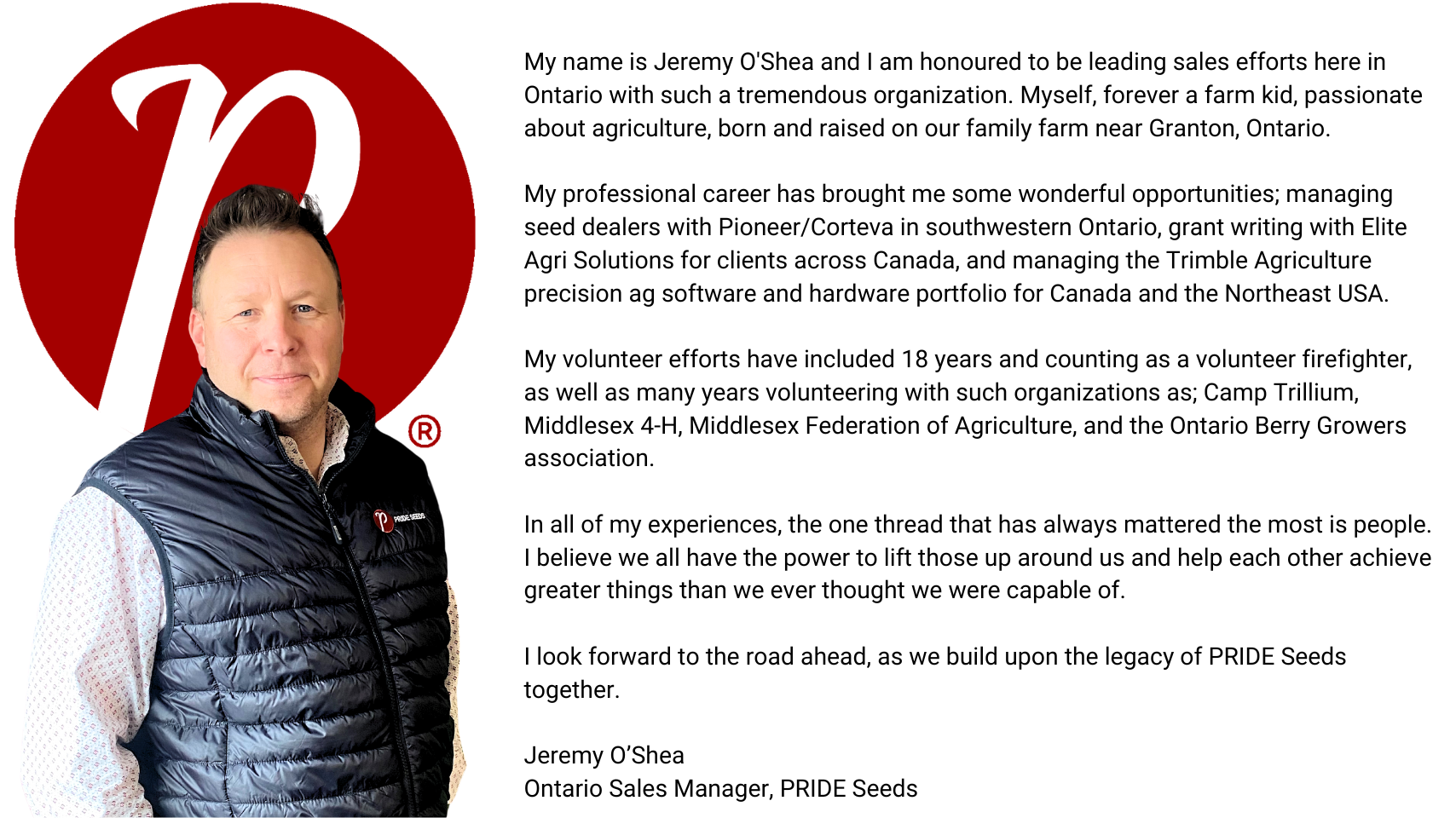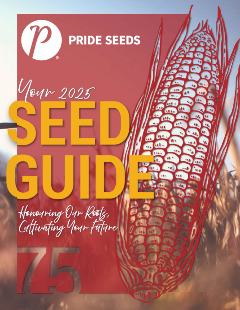WELCOME JEREMY O'SHEA TO PRIDE SEEDS

Enhance your knowledge and stay ahead with PRIDE SEEDS Corn and Soybean School videos.
Browse our selection of products below
___________________________________________________________________________________________________________________________________________

2024-2025 PRIDE Seeds Product GuideYou can find all of our products on the website, including supporting performance data and create your own personalized guide called My Guide. You can also download the digital version of our printed product guide which includes product comparison charts. |
SHOP THE PRIDE SEEDS E-STORE
-7.png?sfvrsn=87920db3_3)
STAY UP-TO-DATE WITH PRIDE SEEDS LATEST BLOGS, NEWS AND ARTICLES
5 Takeaways for Corn Grazing Considerations
In February, 2021, PRIDE Seeds hosted a virtual corn grazing webinar with Dr. Bart Lardner, a Professor in the Department of Animal and Poultry Science at the University of Saskatchewan. Dr. Lardner supervises undergraduate and graduate students and teaches courses in forages and beef cattle nutrition.
The following are five key take-away’s from his presentation.
1. Have a backup plan...or two.
62% of cow-calf operations in Western Canada have 2-3 winter feeding methods. Mother Nature does not always follow the plans you set out for your corn grazing field. Early frost, lack of rain and cool springs can negatively impact growth and development of the corn crop, and negatively affect feed quality. Having a plan with multiple scenarios or options can help ensure adequate feed supply for your herd when Mother Nature does not cooperate with Plan A.
2. Feed test and meet the nutrient requirements of the animal.
Knowing the nutrient density of the feed in-front of the cattle is essential for meeting the cattle’s nutrient requirements and maintaining body condition score. If the corn the cattle are grazing is not meeting their nutrient requirements, other feed sources may need to be supplemented. It’s important to remember that winter conditions (cold temperatures and cold winds) increase cattle’s energy requirements. Implementing a good trace mineral program will be important for cattle feeding on grazing corn. Copper, zinc and manganese are the fertility minerals and these need to be in good supply for pregnant cows and heifers.
“Feed is the single greatest variable cost in beef production” – Dr. Bart Lardner
 |  |
| A4705HMRR standing very well in a field close to Wainwright, Alberta on February 26th, 2021 prior to be grazed | Checking ear development on A4705HMRR |
3. Help new cows learn how to feed on grazing corn
Naïve cows may struggle to figure out how to feed on the tall corn crop they are put in front of. To help make the transition smoother, consider fencing off the first 5-7 rows of corn and adding a couple round hay bales so that the cattle have something to graze one before they try the new feed source. It may take an entire winter grazing season for the cows to feel confident in the new feeding system.
4. Limit Graze–3-4 days then move to new area
Cattle will eat the corn cobs first, then go for the leaves, husks and stalks. By containing the cattle into one area for 3-4 days this encourages the cattle to clean up a little more of the stalk and stover. Animals tend to leave the stalk and stover to last – it is up to the farm to decided what level of utilization they are comfortable with before moving the cattle to a fresh patch of grazing corn. 100% consumption is not a realistic goal. 80-90% consumption is a good target to aim for.
5. Dealing with Winter Conditions
You can not treat an extensive winter grazing system, like corn grazing the same way you would treat summer pasture. Wind protection is critical – natural shelter belts or portable windbreaks work well. It’s impressive how much comfort and protection a portable fence can provide on a windy day. Accessible winter water sources are also important because with cold temperatures comes freezing water bowls. Different options are available (insulated troughs, frost-free nose pumps, etc.) and having water available is critical for cattle.
“Manage and monitor” was the critical theme throughout Dr. Lardner’s presentation. This principle is crucial for maintaining your herd while using corn grazing or any other extensive winter grazing system.
TAKE PRIDE IN YOUR INBOX
Expert advice, news and information
THE PRIDE SEEDS ADVANTAGE
Farming is one of the most demanding industries in the world, subject to a variety of factors such as time, weather, and global pressures. You know this every time you look out the window and think about the field in front of you. Growers and dealers deserve an advantage: The PRIDE Seed Advantage.
LEARN MORETHE PRIDE SEEDS ADVANTAGE
Every year PRIDE Seeds works hard to produce leading-edge products that enable success where it matters most, on your farm. Our dedicated team strives to provide sales expertise, agronomy support, quality production, and service tailored to meet your needs.
LEARN MORE

Leave a commentOrder by
Newest on top Oldest on top